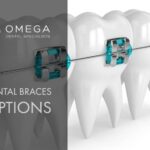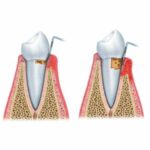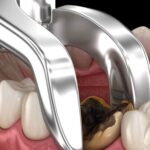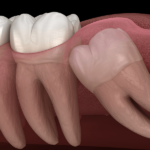What is Alveoloplasty?
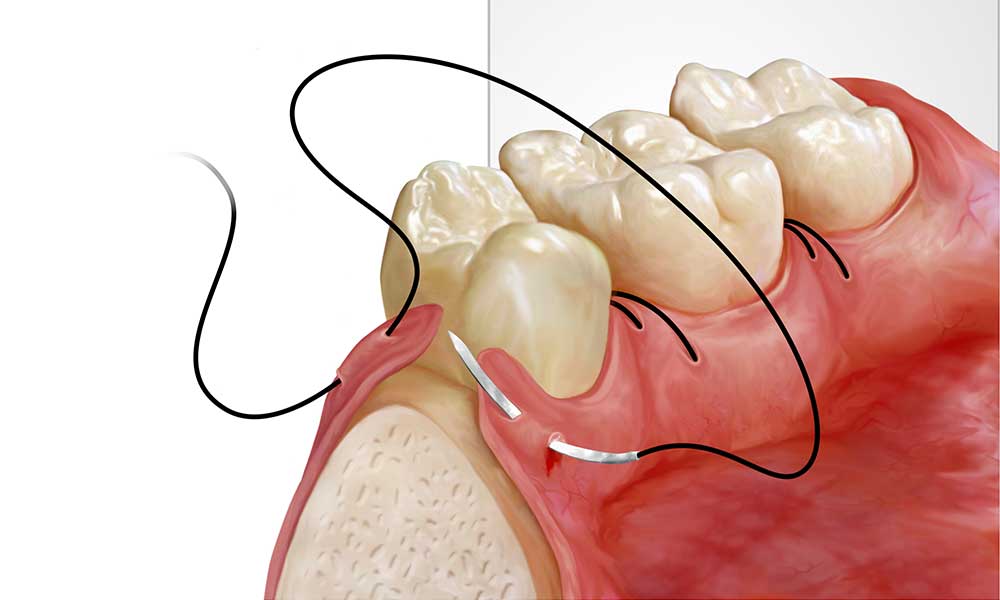
Alveoloplasty is a common type of dental procedure involves the surgical smoothing and re-contouring of a patient’s jalveolar ridge. The procedure is most often performed as either after a tooth extraction or as a stand-alone procedure intended to prepare a patient for a denture or dental implant. In most cases, alveoloplasty is associated with reshaping the patient’s jawbone after teeth have been removed or lost due to gum disease or dental truama.
The primary benefit of alveoloplasty after tooth extraction is that it results in a more suitable jawbone shape for future dental treatments, like dental impalnts or dentures. This treatment facilitates the healing process. When Alveoloplasty is performed in association with denture, its purpose is to optimize the patient’s alveolar ridge’s shape. This helps to reduce the complications of dentures as well as improving stability of the prosthetic applicences, retention and overall patient comfort.
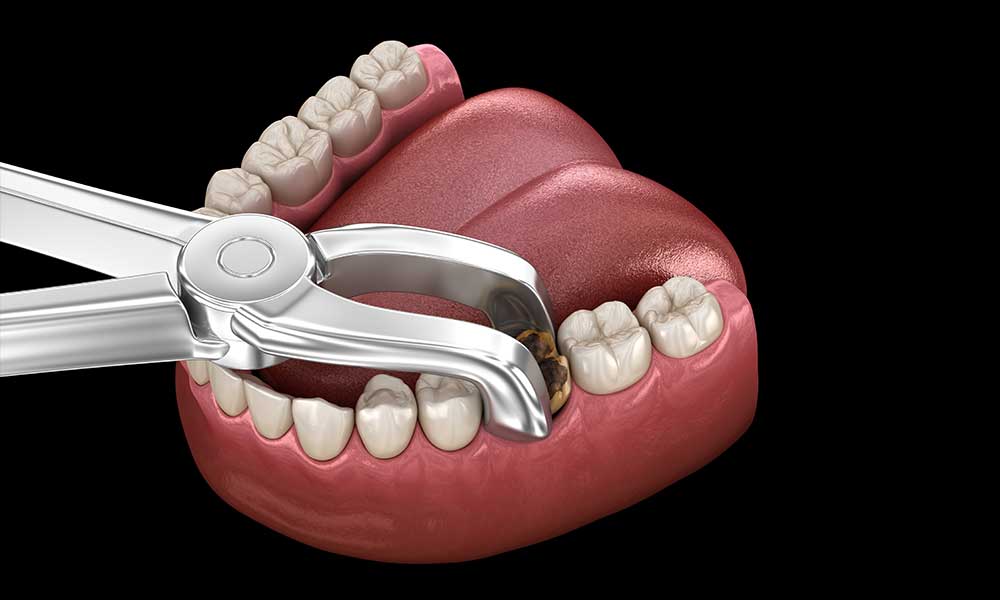
Table of Contents
What is an Alveoloplasty in conjunction with extraction?
Patients who have had tooth extractions will often have the alveolar ridge evaluated for bone tissue quality and quantity as well as overall contour. This is usually done after teeth removal by an oral surgeon. Alveoloplasty provides a smooth and rounded bone surface. This facilitates faster healing and reduces complications. The procedure is very safe and consistently has a very high overall success rate.
After multiple teeth removal, alveoloplasty is a very useful solution designed to return good functionality and improved appearance for the patient. If couple of teeth are missing because extraction, the dentist should prepapre the alveolar ridge for the next step treatment, including removable denture or dental implants. Alveoloplasty in conjunction with teeth removal can avoid the necessity for secondary surgical procedures. In being proactive a dentist can use evaluation and planning along with alveoloplasty to provide a patient with an extraction process with a more favorable outcome. Most importantly, staying proactive in this way will help to reduce the chances of having an additional and possibly more extensive surgical procedure performed at a later time.
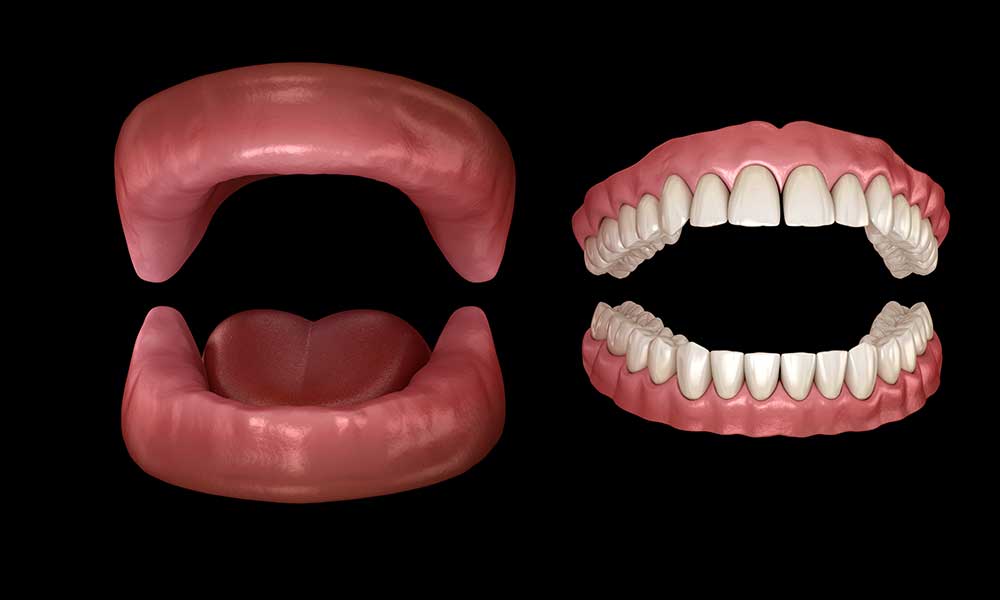
Is Alveoloplasty Necessary for Dentures?
Alveoloplasty should be part of any initial denture construction. The dentist can identify irregularities with the jawbone ridge that may ultimately end up interfering with partial or complete denture insertion. Also, jawbone ridge irregularities may result in ongoing discomfort and denture stability issues for a patient. In other more extreme cases, the patient may even have denture retention related issues. Alveoloplasty is quite often offered to a patient as a stand-alone procedure to prevent any future problems with dentures.
Dentures may irritate the patient’s underling gum if the jawbone is uneven or not smooth. In short, if there is a portion of the jalveolar ridge that has protrusions, dentures will irritate. Alveoloplasty solves this problem in a highly effective way. Alveoloplasty is frequently utilized to allow for a more secure and firm fit of dentures. One example of this is when there are concave areas or undercuts in the patient’s jawbone. This condition should be corrected so that dentures fit firmly and more securely.
Osteoplasty
If a patient has already had jawbone remodeling and it has not healed as anticipated, additional alveoloplasty may be required. This can be a naturally occurring event as there are simply times when there is no way to predict how the jaw will eventually heal.
Jaw Bone Reshaping
Another situation where alveoloplasty may be beneficial to the patient is when teeth have been removed over a number of years in a sporadic fashion. The end result is that the shape of the ridge becomes irregular thus eventually requiring treatment. There are also situations where multiple separate Alveoloplasty procedures will result in the best possible outcome. This is often seen with naturally occurring skeletal or jawbone type irregularities or unanticipated lumps of bone that are detected on the hard palate or jaw.
In summation, bone recontouring procedures are highly successful at smoothing the jawbone. The procedure is most commonly used in areas where teeth have been removed or extracted. It may be performed both as a standalone treatment or done at the time that teeth are extracted. The main purpose of the procedure is to address residual jawbone ridges that can have certain types of irregularities such as concave undercuts or protrusions. The main objective of this type of procedure is to reshape the jawbone in such a way that it will accept a denture appliance more readily.
Cost of Alveoloplasty
As a final note, this type of treatment is highly beneficial to patients simply because of the fact that it results in faster healing. This is especially true with regard to cancer patients who may require diseased teeth to be extracted prior to receiving radiation therapy in the neck or head region. Talk with your dental care provider to determine whether or not alveoloplasty is the right procedure for your unique dental needs.
The cost of alveoloplasty is directly related to the site and size of the surgical area. The Alveoloplasty cost can vary depending on the patient’s overall dental health and medical condition. The cost of alveoloplasty have wide variations in range and can be anywhere from $500 up to $2000 depending on the unique situation.
If you are a candidate for Alveoloplasty, contact Omega Dental Specialists to explore your treatment options today.
